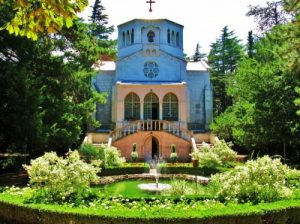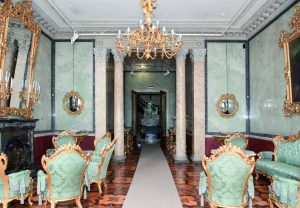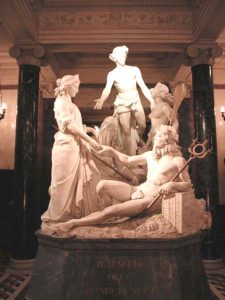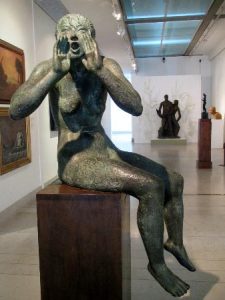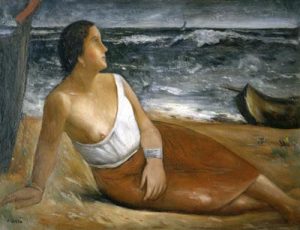Il Museo Revoltella è situato in un palazzo neorinascimentale del 1858 e si affaccia su Piazza Venezia. Comprende l’appartamento privato del Barone Revoltella, proprietario del Palazzo omonimo, e il Palazzo Brunner che ospita al terzo piano la Galleria d’Arte Moderna.
Pasquale Revoltella nacque a Venezia nel 1795 e si trasferì, da bambino, con la sua famiglia a Trieste. Diventò un personaggio importante nella vita politica e soprattutto economica della città e contribuì all’apertura del Canale di Suez.Morì nel 1869 celibe e donò con il suo testamento il Palazzo Revoltella con il il Museo e lo Chalet con il Parco Revoltella, località Ferdinandeo, alla città di Trieste.
Morì nel 1869 celibe e donò il Palazzo Revoltella con il Museo e lo Chalet con il Parco Revoltella, località Ferdinandeo, alla città di Trieste.
Ogni camera del suo appartamento privato, interno al Palazzo Revoltella, era curata nei minimi particolari decorativi e ornamentali. 

Appassionato d’arte e del gusto del bello, il barone arricchiva ogni stanza del palazzo di opere d’arte.
La Sala da pranzo, il Salotto verde, il Salotto azzurro, il Salotto giallo, la Sala da ballo, la Saletta a cupola e tante altre sale avevano ognuna funzioni distinte di rappresentanza e di arte.
L’opera scultorea “la Fontana della Ninfa Aurisina” (1858) di Pietro Magni accoglie i visitatori del Palazzo Revoltella e rappresenta la costruzione del secondo acquedotto di Trieste, un vero gioiello tecnologico.
Al primo piano “Il taglio dell’istmo di Suez” (1863) di Pietro Magni, rappresenta l’Europa che tiene uniti, stringendone le mani, il Mare Mediterraneo e il Mar Rosso.
Oltre alle opere del barone, il Comune acquisì numerose altre opere, pagate con le donazioni che lo stesso Revoltella aveva fatto alla città. Le opere esposte oggi sono circa 350 tra dipinti e sculture.
Il Palazzo Brunner ospita le opere di autori italiani della seconda metà dell’Ottocento (terzo piano), le opere acquisite nei primi decenni del Novecento (quarto piano), le opere di artisti del Friuli-Venezia-Giulia (quinto piano) e nazionali (sesto) della seconda metà del Novecento.
Le opere esposte sono, tra gli altri, di artisti come Giovanni Fattori,Domenico Induno, Giuseppe de Nittis, Ignacio Zuloaga, Mario Sironi, Carlo Carrà, Giorgio De Chirico, Lucio Fontana, Manlio Rho, Mario De Luigi, Arnaldo Pomodoro, Giacomo Manzù, Francesco Hayez, Alice Pscaropulo.



